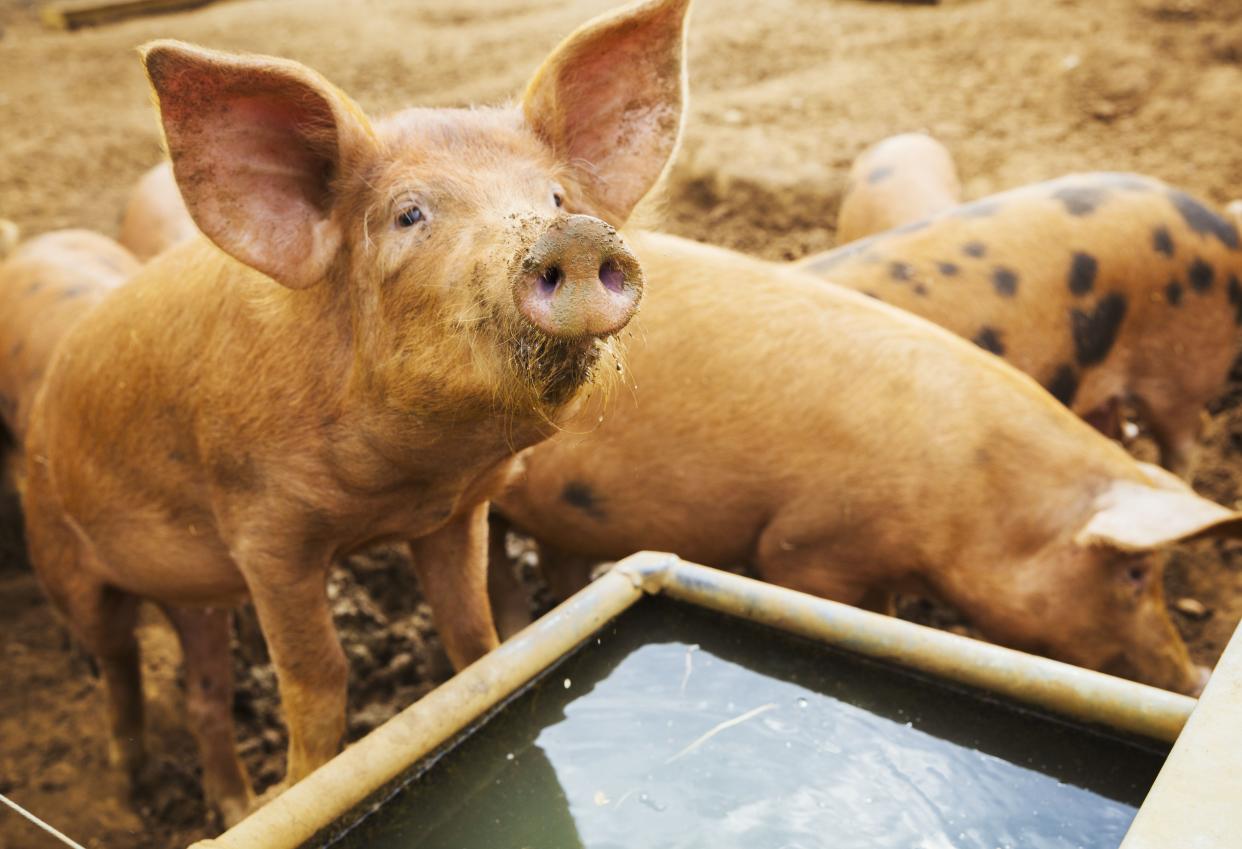Disturbing pig brain ‘immortality’ experiment could trap humans in a ‘living hell’

Yale researchers have kept ‘hundreds’ of pig brains alive for up to 36 hours after the animals were decapitated – in an experiment which raised the possibility of human immortality.
The Yale team use pumps, heaters, and bags of artificial blood at body temperature to keep the brains alive.
There’s no suggestion that the brains are conscious – but in what is described as a ‘mind-boggling’ and ‘unexpected’ result, many of the cells appear to be healthy.
But while the experiment might seem to raise the possibility of human brains being transplanted – or defeating death altogether – we should be careful what we wish for says Nottingham Trent ethics and philosophy lecturer Benjamin Curtis.
Curtis says in an essay for The Conversation, ‘Even if your conscious brain were kept alive after your body had died, you would have to spend the foreseeable future as a disembodied brain in a bucket, locked away inside your own mind without access to the sense that allow us to experience and interact with the world.
MOST POPULAR TODAY ON YAHOO
Oxford city centre reopens after armed siege between gunman and police ends peacefully
Fury over mountains of of litter left by Bank Holiday drinkers on British beauty spot
Here’s why some people’s hair goes grey early, according to science
IKEA fans who travelled 100 miles are turned away after new store gets opening date wrong
‘In the best case scenario you would be spending your life with only your own thoughts for company.
‘Some have argued that even with a fully functional body, immortality would be tedious. With absolutely no contact to external reality it might just be a living hell. To end up a disembodied human brain may well be to suffer a fate worse than death.’
The idea is a staple of horror cinema and science fiction – and some believe it could be the first step towards immortality.
Previous experiments included Soviet scientists using a primitive ‘heart lung machine’ to bring a severed dog’s head back to life in 1940.
A film Experiments in the Revival of Organisms, was created by the Soviet Film Agency – and reportedly shows the work of two scientists in ‘reviving’ dead animals.
The narrator says ‘The isolated head lives on for hours, and even reacts to external stimuli.’
Two scientists, Sergei Brukhonenko and Boris Levinskovsky, use an ‘autojector’ machine to reanimate the animals, by circulating blood round the animals.
The film caused controversy worldwide on its release.
The playwright George Bernard Shaw said, ‘I am greatly tempted to have my head cut off so that I may continue to dictate plays and books independently of any illness, without having to dress and undress or eat or do anything at all but to produce masterpieces of dramatic art and literature.’
What’s less clear is how real the footage is: the camera angles are sometimes odd, and scientists with knowledge of the project claim that the animals only ‘lived’ for minutes, not hours.

 Yahoo News
Yahoo News 

